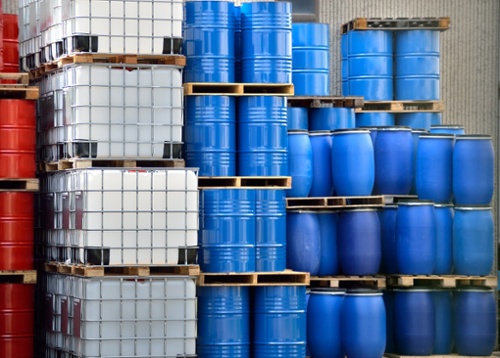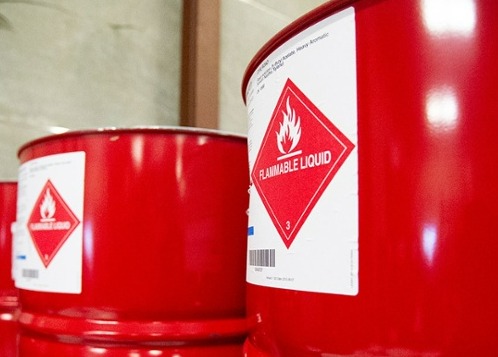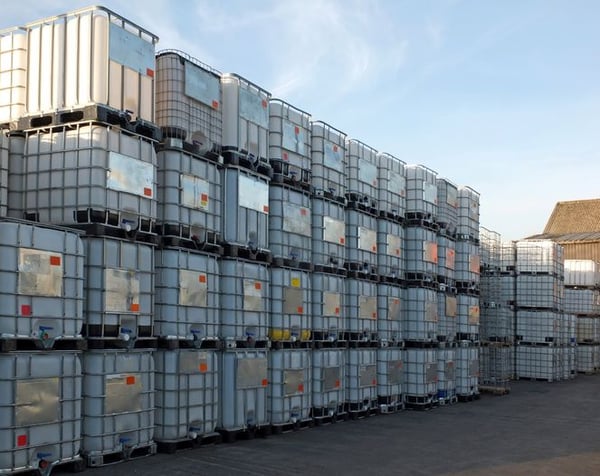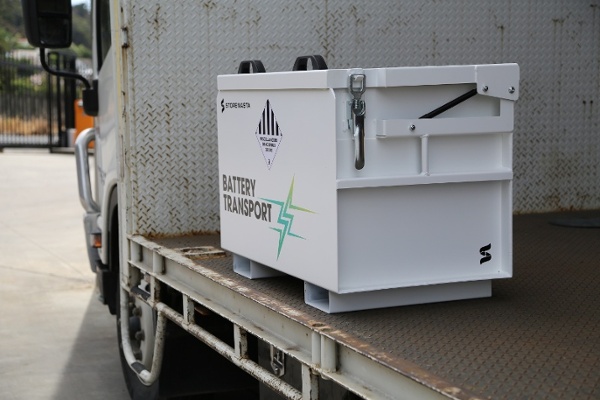Dangerous goods are divided into 9 classes (and several subdivisions) based on the predominate hazard presented by the dangerous substance. The hazard presented by a dangerous substance is due to the substance’s chemical and physical properties. In this easy-to-understand blog, we’ll be highlighting what you need to know about dangerous goods classes, divisions, packing groups and subsidiary hazards. Read our post to improve your knowledge about dangerous goods — and help create a safer work environment in your own organisation.
Dangerous Goods Classification

What are the classes of dangerous goods? In Australia, substances or articles may be recognised within a dangerous goods class of subdivision. The various dangerous goods classes and their subdivisions are listed in full below:
Class 1: Explosives
Division 1.1: Substances and articles which have a mass explosion hazard
Division 1.2: Substances and articles which have a projection hazard but not a mass explosion hazard
Division 1.3: Substances and articles which have a fire hazard and either a minor blast hazard or a minor projection hazard or both, but not a mass explosion hazard
Division 1.4: Substances and articles which present no significant hazard
Division 1.5: Very insensitive substances which have a mass explosion hazard
Division 1.6: Extremely insensitive articles which do not have a mass explosion Hazard
Class 2: Gases
Division 2.1: Flammable gases
Division 2.2: Non-flammable, non-toxic gases
Division 2.3: Toxic gases
Class 3: Flammable liquids

Flammable liquids are recognised in Australia as a Class 3 substance.
Class 4: Flammable solids; substances liable to spontaneous combustion; substances which, on contact with water, emit flammable gases
Division 4.1: Flammable solids, self-reactive substances and solid desensitised explosives
Division 4.2: Substances liable to spontaneous combustion
Division 4.3: Substances which in contact with water emit flammable gases
Class 5: Oxidizing substances and organic peroxides
Division 5.1: Oxidizing substances
Division 5.2: Organic peroxides
Class 6: Toxic and infectious substances
Division 6.1: Toxic substances
Division 6.2: Infectious substances
Class 7: Radioactive material
Class 8: Corrosive substances
Class 9: Miscellaneous dangerous substances and articles
Lithium-ion batteries are recognised as Class 9 Miscellaneous Dangerous Goods.
Subdivisions
As we have illustrated above, the dangerous goods classes that are divided into subdivisions include:
- Class 1: Explosives
- Class 2: Gases
- Class 4: Flammable Solids
- Class 5: Oxidising substances and organic peroxides
- Class 6: Toxic and infectious substances
While all the substances within a class have a similar main risk, they may be classified further according to their specific chemical characteristics and associated risks. This is when dangerous goods are classified into a subdivision.
Packing Group
In addition to the dangerous goods classification of substances and articles, you may have to also consider the 'pacing group' of your goods.
Some dangerous goods classes and divisions are also divided into packing groups — otherwise known as UN packing groups. The packing groups within a dangerous goods class specify the degree of danger associated with the substances with the class.
The UN packing group of your substance will help you determine the packaging required for dangerous goods transport.
Why Is UN Packing Group Important?
As the correct packaging is crucial for the safe transport of dangerous goods, the UN Model Dangerous Goods Regulations offers a global system for the packaging of substances for the purpose of transport. This system includes a list of UN packing groups for dangerous goods classes and divisions, as well as specific packing instructions for that substance.
Identifying the UN packing group (and adhering to the required packaging instructions) of your substances enables you to ensure the safe transport of dangerous goods across Australia and the globe.
How to Assign UN Packing Group?
There are three different packing groups, each representing a specific degree of danger.
The 3 UN packing groups are:
-
Packing Group I: Substances presenting high danger
-
Packing Group II: Substances presenting medium danger
-
Packing Group III: Substances presenting low danger
But how do you assign a packing group to your dangerous goods?
To understand the packing group of your dangerous goods, you must first refer to the safety data sheet of your substances. This will inform you of the dangerous goods class or subdivision of your chemicals.
You can then refer to the Australian Dangerous for the Transport of Dangerous Goods by Road & Rail (ADG) Code to learn more about the assignment of packing groups for each dangerous goods class and subdivision.
In the table below, we’ve listed each of the dangerous goods classes, along with the associated packing groups.
|
Dangerous Goods Class/Division |
Packing Groups |
|
Class 1 - Explosives |
Not applicable |
|
Division 2.1 - Flammable Gases |
Not applicable |
|
Division 2.2 - Non-flammable Non-toxic Gas |
Not applicable |
|
Division 2.3 - Toxic Gas |
Not applicable |
|
Class 3 - Flammable Liquids |
I, II & III |
|
Division 4.1 - Flammable Solids |
I, II & III |
|
Division 4.2 - Spontaneous Combustibles |
I, II & III |
|
Division 4.3 - Dangerous When Wet |
I, II & III |
|
Division 5.1 - Oxidising Agents |
I, II & III |
|
Division 5.2 - Organic Peroxides |
Not applicable |
|
Division 6.1 - Toxic Substances |
I, II & III |
|
Division 6.2 - Infectious Substances |
Not applicable |
|
Class 7 - Radioactive Substances |
Not applicable |
|
Class 8 - Corrosive Substances |
I, II & III |
|
Class 9 - Miscellaneous Dangerous Goods |
II & III |
Subsidiary Hazards
If the chemical and physical properties of a dangerous substance present more than one particular hazard, this substance will be assigned to the dangerous goods class that matches its main hazardous property.
The other hazards associated with the dangerous substance are referred to as the subsidiary hazards.
Some examples of dangerous substances with subsidiary hazards are outlined below:
Hydrogen Peroxide is a strong oxidising agent that also has corrosive properties. It meets the classification criteria for both Division 5.1 Dangerous Goods and Class 8 Dangerous Goods. Hydrogen Peroxide has a greater oxidising ability than corrosion ability and therefore it is assigned to Division 5.1 as its dangerous goods classification. The Australian Dangerous Goods Code also shows it as having a subsidiary hazard of Class 8 to cover its corrosive hazard.
Chlorine Gas is a toxic gas that also has corrosive properties. It meets the classification criteria for both Division 2.3 Toxic Gases and Class 8 Corrosive Substances. The major risk associated with chlorine gas is its toxicity and therefore it is assigned to Division 2.3 - Toxic Gases as its dangerous goods classification. The Australian Dangerous Goods Code also identifies chlorine gas as having a corrosive hazard by assigning it a subsidiary hazard of Class 8.
Understanding Dangerous Goods Classification
As we’ve discussed in this post, there are 9 different classes of dangerous goods. Each class has various classification factors, such as subdivisions and packing groups. The dangerous substances within each class may also have subsidiary hazards, which means they may meet the classification criteria for more than one class of dangerous goods.
To ensure that your organisation is protected from the risks associated with dangerous substances, it is very important that you and your team are well aware of the chemical and physical properties associated with each dangerous goods class. If you are interested in learning more about the 9 different classes of dangerous goods, download our FREE eBook by clicking on the image below.
Joining the team as a Dangerous Goods Storage Consultant, Melissa Hampton became Storemasta's Marketing Manager in late 2021. With extensive knowledge and experience in chemical compliance, Melissa is responsible for leading the Marketing team and helping shape their marketing strategy. In her spare time, you can find Melissa hiking, swimming and enjoying the great outdoors in beautiful north-west Tasmania.

